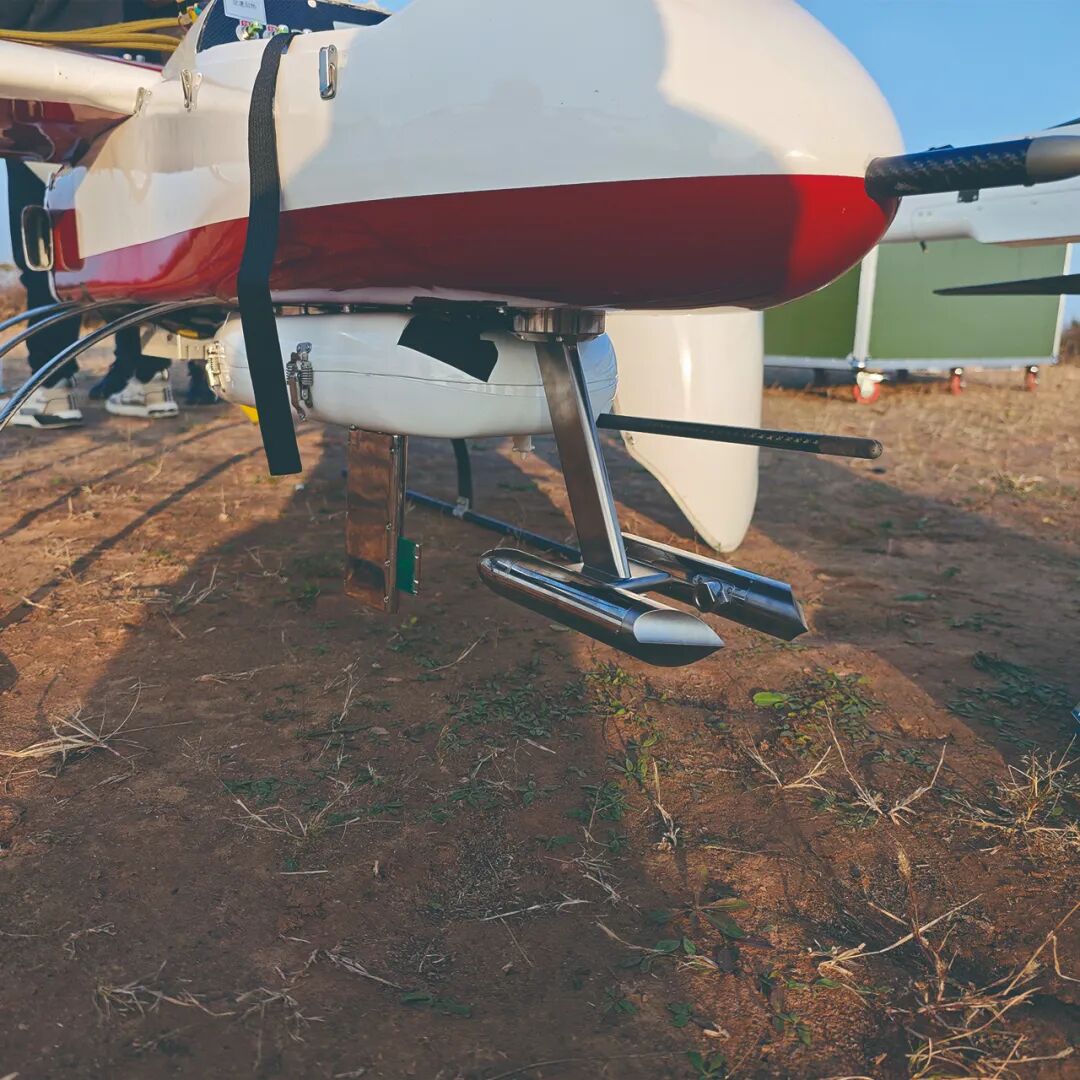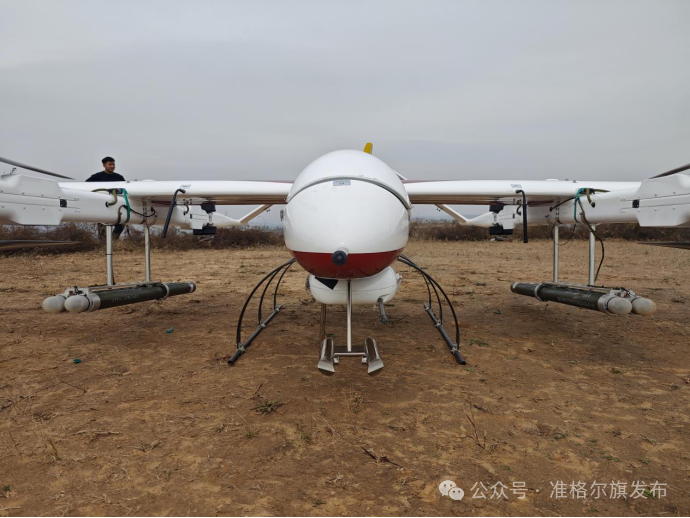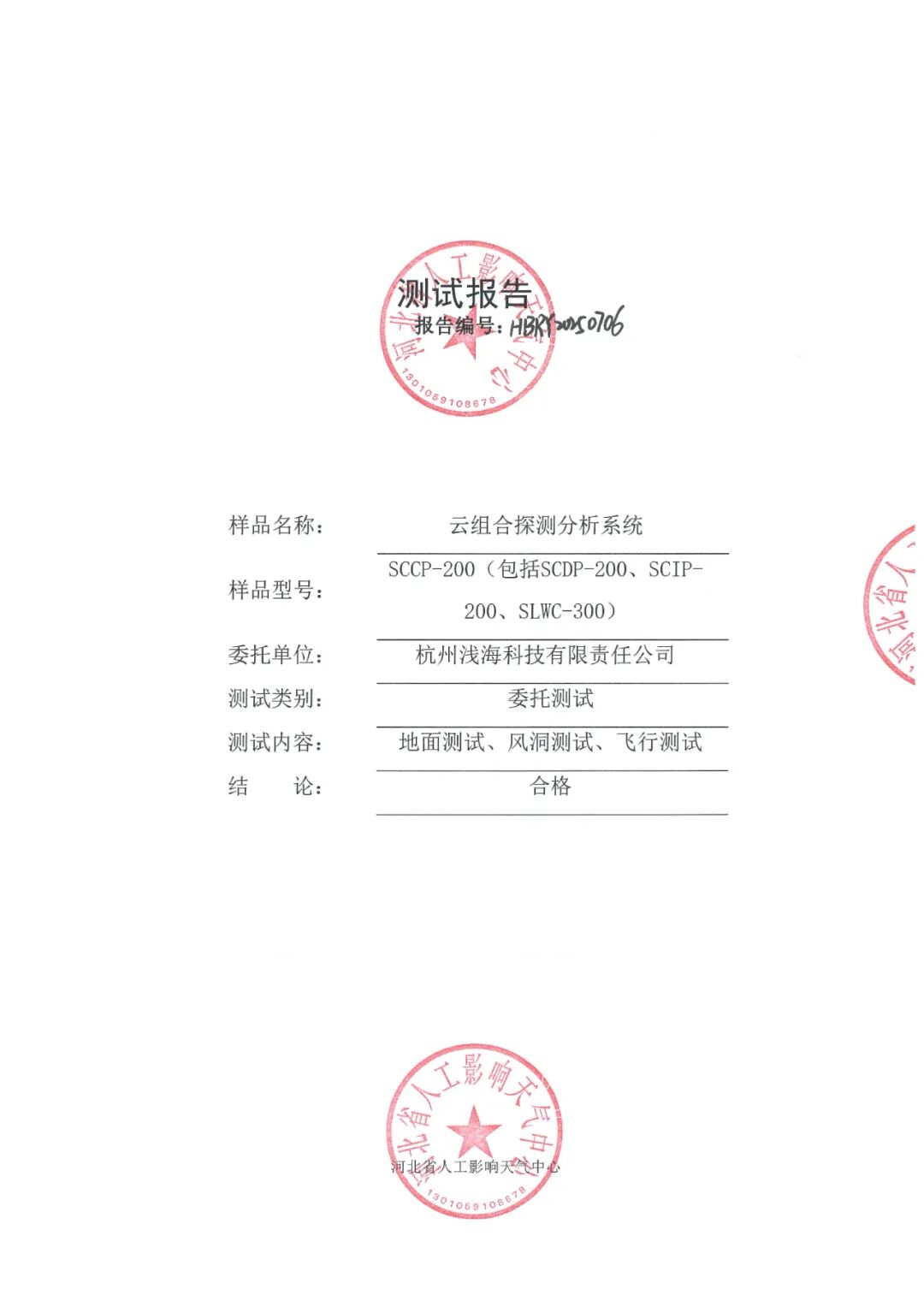The UAV Cloud and Water Detection System integrates a number of advanced detection technologies of Shallow-Sea Technology:
- The Cloud Droplet Probe (SCDP-200) can obtain key parameters in real time for cloud droplets at high altitudes within the range of 2–50 microns, including droplet size spectrum, particle number concentration, and median volume diameter;
- The Miniature Meteorological Element Probe (SMIP) synchronously collects information such as temperature, humidity, air pressure, wind speed, wind direction, and GPS positioning data;
- The Liquid Water Sensor (SLWC-300) accurately measures liquid water content within the range of 0.05–3 g/m³.
By fusing multi-source data, a three-dimensional and high-resolution cloud-water distribution model is constructed. The official commissioning of this system will greatly enhance the targeting and scientificity of UAV-based precipitation enhancement operations in Jungar Banner, enabling a leap from "experience-driven operations" to "data-driven operations". Through accurate identification of seeding-feasible cloud areas and optimal operation timings, it will effectively improve precipitation efficiency and provide strong scientific and technological support for regional water resource regulation, ecological restoration, and drought resistance & soil moisture conservation.


Another heavyweight product of the UAV Cloud and Water Detection System – the Cloud Composite Detection and Analysis System (SCCP-200) – has also successfully passed ground tests, wind tunnel tests, and flight tests recently. This marks that the system has officially moved from the "laboratory prototype" stage to the engineering product stage featuring "maturity, usability, and readiness for practical application".
In the ground test phase, traceable standard-sized glass beads were used to test the SCDP-200 device within the particle size range of 2 μm to 50 μm. The reliability of the device’s data was verified by comparing the reference droplet particle size with the actual size of the glass beads. Additionally, a rotating glass disk with opaque dots of known sizes was used to test the SCIP-200 device within the particle size range of 25 μm to 1550 μm. All key system inspections and performance verifications were successfully completed.
The flight environment was simulated in a wind tunnel to verify the operational reliability of the device’s overall hardware. During the wind tunnel tests, multiple tests were conducted under different working conditions of water pressure and air pressure, with wind speeds set at 30 m/s, 60 m/s, 80 m/s, and 100 m/s respectively. The total number of test runs exceeded 50. The overall operational reliability of the device was high, with no faults occurring throughout the entire testing process.
During the flight test, the system passed all evaluations for data continuity, real-time performance, equipment stability, safety, and environmental adaptability. Throughout the flight, data transmission remained stable without any interruptions. The equipment maintained stable operation even under challenging environmental conditions such as obvious rain streaks on the aircraft windows and low temperatures.
We would like to express our gratitude to the Meteorological Bureau of Jungar Banner for its trust and support. Qinhai Technology is honored to participate in and witness this journey. In the future, we will continue to support the Meteorological Bureau of Jungar Banner, advance the modernization of meteorological services, and gradually explore the construction of an intelligent meteorological service system integrating monitoring, service provision, and assessment. We will also strengthen the role of technology in empowering ecological protection, contributing meteorological expertise to consolidating China’s important ecological security barrier in the north and promoting the high-quality development of local economy and society.Currently, Shallow-Sea Technology has 6 types of localized airborne detection equipment, which are mainly applied in fields such as cloud microphysics research and weather modification.
▌Partial Sources of This Article:Jungar Banner Converged Media Center, Jungar Banner Release

 PubDate:2025-11-13
PubDate:2025-11-13
 ViewNum:23
ViewNum:23










 WeChat
WeChat
 T1-11F, Herui Science and Technology Park, Binjiang District, Hangzhou City, Zhejiang Province
T1-11F, Herui Science and Technology Park, Binjiang District, Hangzhou City, Zhejiang Province